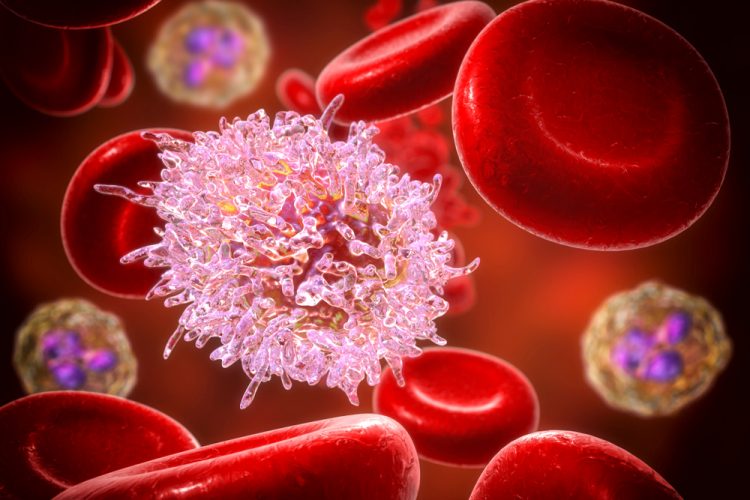B-ALL: combination therapy effectively controls high-risk subtypes
Posted: 10 April 2024 | Drug Target Review | No comments yet
The combination therapy worked faster and was lessened the number of leukaemia cells compared to asparaginase or venetoclax alone.

Researchers at the St. Jude Children’s Research Hospital have found which tumour cells in B-cell acute lymphoblastic leukaemia (B-ALL) resist treatment and why. This enabled the design of a combination therapy that better controlled high-risk subtypes of B-ALL in mouse models.
B-ALL is the most common childhood cancer, and although it has an overall survival rate of 94 percent, it is difficult to treat. Survival among relapsed or resistant cases falls between 30 to 50 percent. Senior corresponding author Dr Jun Yang, St. Jude Department of Pharmacy and Pharmaceutical Sciences vice-chair, commented: “We found a new explanation of B-ALL sensitivity to asparaginase, which is one of the most commonly used drugs for this disease…Although asparaginase has been around for almost 50 years, the way we use this drug for ALL remains imprecise. This is partly because we still do not fully understand the mechanism by which it kills leukaemia cells.”
The team demonstrated that combining the chemotherapy drug asparaginase with a newer drug, venetoclax (a BCL-2 targeted therapy), was most effective at treating B-ALL in laboratory models. This combination worked faster and lessened the number of leukaemia cells more than either drug alone. Across the three different high-risk subtypes of this cancer, the improved effects were consistent.
Co-corresponding author Dr Jiyang Yu, St. Jude Department of Computational Biology interim chair, explained: “This discovery was enabled by single-cell systems biology analysis of B cell development and integration with B-ALL drug sensitivity profiling and bulk RNA-sequencing data…Our single-cell network analysis revealed the protein BCL-2 as a hidden vulnerability in the asparaginase-resistant tumour developmental stage.”
“Administering asparaginase alongside venetoclax may lower the risk of ALL relapse, the major reason for treatment failure,” added co-author Dr Ching-Hon Pui, St. Jude Department of Oncology Fahad Nassar Al-Rashid Endowed Chair of Leukemia Research. “Ideally, we aim for venetoclax to potentiate the anti-leukaemia properties of asparaginase while keeping its toxicity levels in check. These concepts warrant further investigation in future clinical trials.”
Venetoclax is an attractive candidate, as it is already Food and Drug Administration–approved for use in other paediatric cancers. However, it was challenging to gain an understanding how venetoclax works with asparaginase to stop B-cell leukaemia.
Two B-ALL developmental stages identified
Under normal circumstances, B cells go through eight steps to develop from immature to fully mature. In cancers, cells become stuck in an intermediate stage of development. As reported in Nature Cancer in 2021, Dr Yang and Dr Yu previously discovered that in T-cell acute lymphoblastic leukaemia, the developmental stage where T cells get stuck determines their sensitivity to therapeutics.
Gene expression data from hundreds of thousands of individual cancerous B cells was studied to understand their differences, and two dominant B-cell development stages of B-ALL were identified: pre-pro-B (early) and pro-B (late). Dr Yu elucidated: “One is an earlier stage that is more resistant to asparaginase and another later stage that is more sensitive to it.”
Then, Dr Yu’s lab looked for the genes upregulated in the resistant early cells to discover potential vulnerabilities to target. “The protein BCL-2 caught our attention, as it seems to be a driver of asparaginase-resistance in leukaemia cells with pre-pro-B features,” Dr Yu said.
B cell lymphoma protein 2 (BCL-2), a protein involved in cell death, is used by cancer cells to evade the systems that usually cause them to self-destruct. The protein is also downstream of mTOR, the protein targeted by asparaginase. Results showed that BCL-2 was activated in cancer cells resistant to that drug. That resistance relationship meant the team tried venetoclax, which targets the protein BCL-2, in a combination approach.
“When you add asparaginase, you hit mTOR signalling,” Dr Yang said. “In turn, that upregulates the BCL-2 activity, making the cells more sensitive to venetoclax.”
Furthermore, this work has implications for other cancers because incorrect development underlies many forms of the disease. Single-cell gene sequencing and analysis may provide similar opportunities to improve therapies in those contexts.
This study is published in Cancer Cell.
Related topics
Cancer research, Chemotherapy, Oncology, Protein
Related conditions
B-cell acute lymphoblastic leukaemia (B-ALL), Cancer Research
Related organisations
St Jude Children’s Research Hospital







